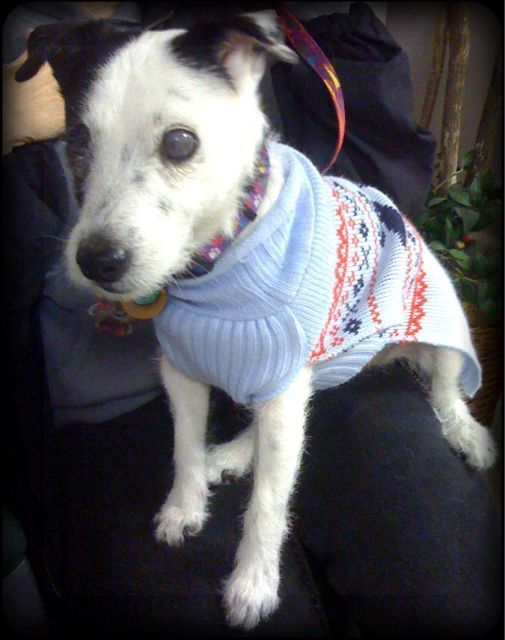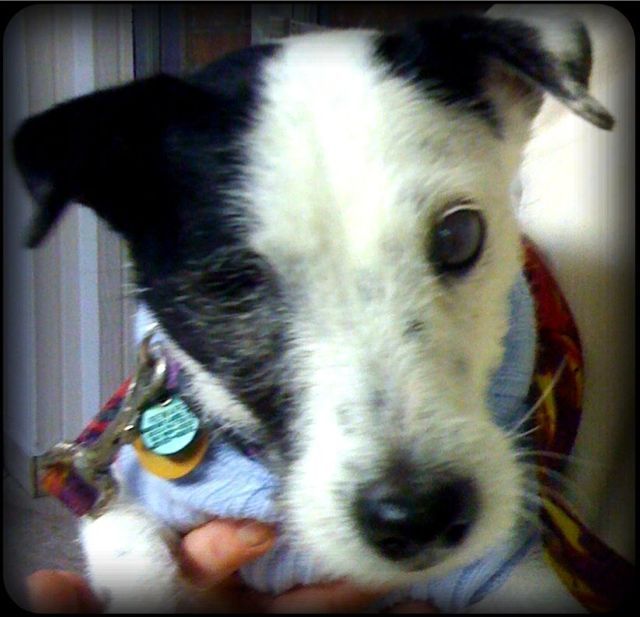Parsons Russell Terrier Glaucoma
If you have a Parson’s Russell Terrier (aka Jack, JRT), whether your dog be smooth coat or rough coat, sudden blindness can hit at any time. These terriers are genetically prone to anterior lens luxation.
Anterior lens luxation means the lens inside the eye slips forward (anterior) through the black hole that is the pupil, and ends up wholly or partly in the front acqueous chamber of the eye, just behind the clear cornea window of the eye.
As you might imagine, anterior lens luxation is painful and unnatural. That lens in front of the colored pupil, instead of behind it, causes increased pressure build-up of the fluid in the globe of the eye. This pressure leads to the disease called glaucoma.
In lens luxation, the solution usually means removing the throbbing, painful eye. The lens has little muscular attachments to the eye (think of them like living tethers) that rip when the lens slides forward into the wrong area of the eyeball. Modern surgery cannot (at this time), surgically repair the cilia tethers. The lens has to come out.
Sometimes removing the lens will fix the pressure problem. Since we use our lenses to see writing and see far, and dogs do not have to accomodate (see near detail and far), they usually do well with no lens.
In Jessie’s case, her glaucoma just wouldn’t let up. Medications barely controlled her elevated eye pressure making her unhappy and uncomfortable. You may have noticed in the picture, she eventually needed her right eye removed.
What you may not have noticed is…Jessie needed her left eye removed as well.
“But I can see her eye!” you say, indignantly.
Oh, yeah? Look again.
Jessie’s left eye was healthy for several years after her enucleation aurgery to remove the diseases right eye. But, most dogs with glaucoma in one eye will eventually end up with glaucoma in the contralateral eye as well.
Most dogs with glaucoma in one eye will eventually end up with glaucoma in the contralateral eye as well.
In spite of frequent check ups and preventative medication, the day came when Jessie left eye kept getting red, swollen, tearing, and she was pawing at it in discomfort.
The easiest thing would have been to surgically remove the left eye. After all, the glaucoma succeeded in blinding her remaining left eye anyway. But, her cute little face would forever be missing both eyes, and her family just couldn’t stand the thought of it!
Jessie underwent a surgery to insert an artificial eye replacement, in which the everything of the inside of the eye is removed, and an artificial firm, gel-like orb is slipped into the empty eye pouch. So the surface is her own cornea, the muscles of the eye and eyelids still blink and move the connective tissue pouch that a blind, sort-of decorative eyeball sits inside.
The downside was, blind Jessie sometimes runs into sticks and things, and needs special eye drops to keep the cornea lubricated. The upside is, Jessie really doesn’t care either way, and this way, she looks more normal in pictures and people treat her like a normal dog when they meet her.
Eye sparing surgery isn’t for everyone. It costs more than removal, and there remains ongoing care and protection of the cornea issues. But got a family set on not looking at a sunken empty furry eye socket (or two) for the rest of their dog’s life, the artificial eye provides peace of mind and a pretty look.





such a pity your poor puppy had to suffer 🙁
glaucoma indeed is a serious conditions, and it occurs not only in dogs, but in people too, which is also so sad because of the sight loss.
glad to hear Jessie doesn’t care about it and she runs like nothing happened 🙂
Actually, Jessie got really depressed for several weeks after she went completely blind. She moped and was reluctant to go outside, even though nothing was moved and she could find her way around. Then one day, she started tearing after her Boston Terrier friend, barking, and joining in the squirrel-chasing mayhem. That’s when we knew she was going to be okay.
Dogs can do remarkably well without vision. Many people find the thought of their dog going blind abhorrent and unthinkable, but the dogs do well if you do not move furniture around, place a pool fence around an in ground pool, just as you would for a small child, and do not let your blind dog alone near flights of stairs and ledges.
If you must move, or move items in the environment, take your blind dog around and show him or her where the food and water dish live, where the door is, etc, so they can get used to the new situation. And be careful to watch out for your blind dog on walks. You can’t talk on the cell phone and ensure your dog doesn’t run into a telephone pole at the same time!